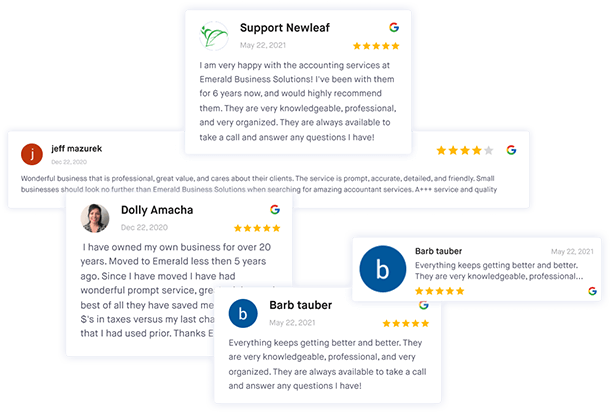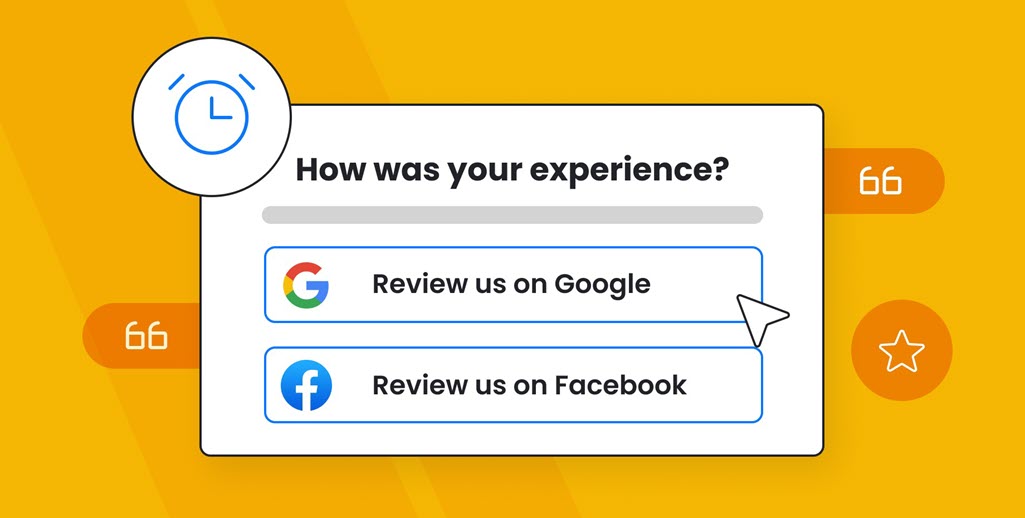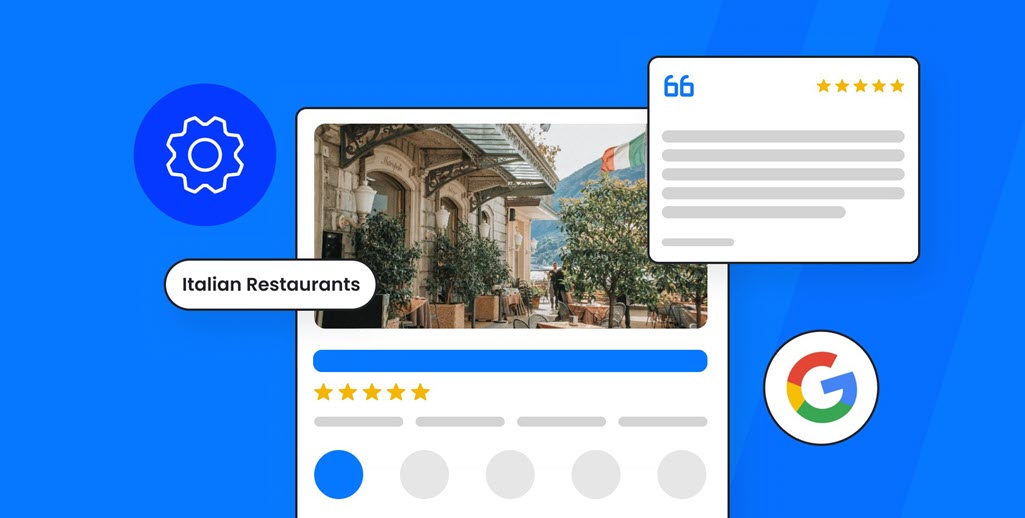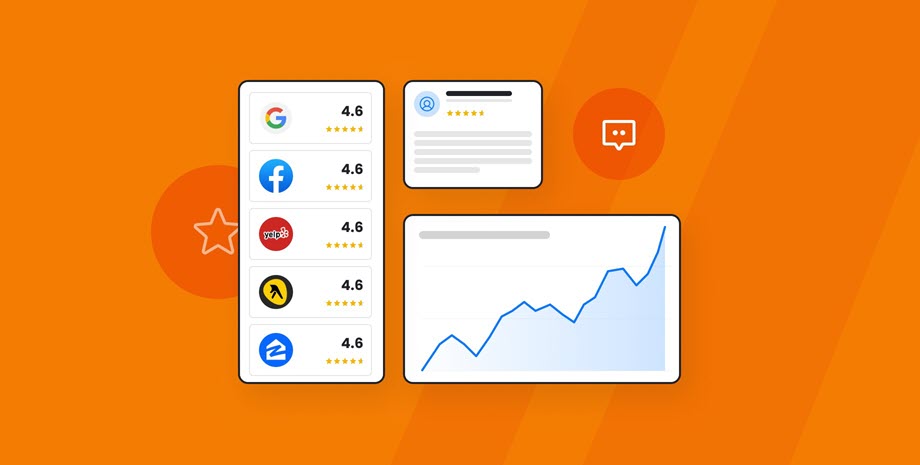Curious about the best time to ask your customers for reviews? Customer feedback is a cornerstone of online credibility. And consumers take it seriously — 1 in 5 always check reviews before making a purchase, while 47.6% check them often.
But asking too early or too late can impact the richness and impact of the reviews you receive. Customers typically need time to evaluate and form an opinion about the product and the overall experience they had with your company.
In this article, we'll unravel the art of review timing, exploring the key moments and strategies for soliciting impactful feedback. Because, in the world of online reputation, timing is everything.
Why Timing Is Important for Review Collection
Collecting customer reviews is a crucial influence for your business's online reputation. The timing of when you ask buyers for feedback can significantly impact its quality and the number of successful new reviews you receive. Approaching customers at the right time helps to collect more reviews and, in turn, boosts your overall rating.
Customers are more likely to leave detailed and helpful reviews when asked at the appropriate moment. That ensures customers' experiences are still fresh in their minds, making their feedback more accurate and valuable. Reviews collected too early or too late may not fully capture customers' sentiments and can result in a lower number of useful reviews.
Properly timed review requests can also improve conversion rates, as customers are more likely to submit reviews when the ask aligns with their experience timeline. Companies that adjust their post-purchase strategies create more opportunities for capturing the consumer experience and stand to benefit from increased social proof and higher ratings.

Streamline review management
Monitor, manage, and get more online reviews for your business with ReviewsOnMyWebsite.
When Is The Best Time To Ask for Reviews?
The best time to seek reviews from customers depends on the type of product or service and the customer's level of satisfaction. For online transactions, it’s essential to find the sweet spot between asking too soon and waiting too long.
Make your request after customers have had enough time to use the product and form an opinion about it. When asking through email, craft a concise, personalized template that includes a clear call to action and review link to save time.
Customer service plays a crucial role in the buyer journey and can affect their decision to leave a review. Excellent service increases consumer satisfaction and may inspire them to share their positive experiences online. Businesses should train their staff to ask customers for reviews, either face-to-face or through follow-up communications like email or SMS.
Google Business Profile and Facebook offer platforms for customers to share their experiences and leave reviews of a business. Feedback on these sites, in particular, can significantly impact a business's online presence and reputation. To increase the number of reviews on these platforms, businesses should encourage satisfied customers to visit their Google Business Profile or Facebook business Page and leave a review. Convenience also plays a role in this decision, so make the process more straightforward by providing consumers with a direct Google review link or instructing them on how to leave feedback, as well as making the ask at the right time.
When Consumers Are Most Likely To Rate a Business on Google
Consumers often rely on online reviews to make decisions about which brands to patronize. By identifying the most opportune times to ask for reviews, businesses can maximize the positive feedback gathered and improve their online reputation.
1. Customers Who’ve Had a Recent Positive Interaction
One of the best times to ask for reviews is immediately after a successful transaction or customer service experience. Shoppers fresh from a positive interaction with a business are likelier to share their satisfaction and leave a glowing review. This can be facilitated through email, in person, or even a follow-up text message.
2. Consider Seasonality
Businesses that operate in seasonal industries, in particular, need to time their review requests carefully. For example, a snow removal business might see increased customer engagement during winter months, making it a strategic time to ask for feedback.
3. Think About Key Customer Milestones
Analyzing consumer data helps pinpoint the most favorable moments for review requests. Businesses should keep track of key customer milestones, such as recurring purchases or anniversary dates, and use these opportunities to ask for reviews. Loyal customers with multiple positive experiences may be more inclined to endorse a business online.
How To Send a Delayed Review Request
A delayed review request can significantly impact the quality and number of customer reviews. To maximize the effectiveness of such a request, consider the timing of the request in relation to the customer's experience with the product or service.
Sending a request too soon after the transaction could result in a rushed and potentially negative review. Conversely, waiting too long may cause customers to lose interest or forget specifics about their experience. To find the right balance, analyze the type of product or service offered and the time customers typically need to evaluate it efficiently.
Handling review requests for products differs from those for services. With products, give customers enough time to use, test, and form an opinion on the item before requesting a review. According to Harvard Business Review, the majority of online customers today take at least two days after getting a product to post a review. Research suggests that delayed reminders (13 days later) increased the likelihood of a customer leaving an online review. For services, the optimal time frame may be shorter, as customers often form their opinions during or immediately after the service.
Timing is important, but also be sure to consider the delivery method when requesting a review. Online requests can capture customer feedback through web forms and dynamic links, while in-store requests can be handed out with receipts on a piece of card as a reminder or even using QR codes. Tailor the request format to suit the customer's preferences and enhance the likelihood of a response.
Tips To Determine the Best Timing for Your Business
Customer reviews have the power to improve business credibility, enhance marketing efforts, and boost sales. To boost the volume of feedback collected (as well as conversion rates in general), businesses have to ask the right people at the right time. Here are three tips to help you identify the best moment for your business:
- Consider the Customer Journey: Requesting reviews from clients or customers should be built into the post-transaction process. Give buyers enough time to experience your product or service so you capture feedback while the experience is still fresh in their minds. On average, aim to send a request for reviews approximately one to two weeks after a purchase.
- Monitor Feedback Patterns: Look for trends in your existing customer feedback to identify the best time to ask for reviews. Monitor and analyze recent reviews to gauge customer satisfaction levels and hone in on any factors that may influence the probability of receiving positive feedback. Let that information guide the timing of your review requests.
- Customize Feedback Forms: Make it simple for customers to provide reviews by offering user-friendly review methods. Consider streamlining the process by using rating scales, multiple-choice options, or pre-selected answers. These tactics contribute to higher response rates and earn more useful feedback for your business. Additionally, customizable forms will oftentimes allow for sending at preset intervals based on the customer journey - ensuring that the feedback request arrives at the right time for the best chances of feedback capture.

Streamline review management
Monitor, manage, and get more online reviews for your business with ReviewsOnMyWebsite.
Final Thoughts
Selecting the right moment to ask customers for reviews can be a challenge. However, by considering the customer journey, monitoring feedback patterns, cautiously leveraging incentives, incorporating reviews into your marketing channels, and customizing feedback forms, you can increase the number and value of reviews you gather to help your business grow and maintain a strong market presence.
Ready to make your business stand out? Implement these strategies today and witness the positive impact on your growth and market presence.
Frequently Asked Questions
What’s the best way to request customer reviews via email?
When asking for reviews through email, ensure the message is personalized and genuine. Start by thanking the customer for their recent purchase and emphasizing their feedback's importance. Make it easy for them by including a direct link to your business’s reviews page or platform. Keep the email brief and to the point, focusing on the value of the buyer’s opinion.
What are some effective strategies for encouraging customers to leave reviews?
Effective strategies to encourage customer reviews include automating review requests with tools like ReviewsOnMyWebsite and promoting your Google review link on your website, emails, SMS, social media, or print materials. Leverage moments of customer happiness, educate customers on the importance of reviews and exercise caution with incentives like discounts or freebies. Focus on delivering an exceptional customer experience that naturally motivates positive feedback. Remember to personalize the review process and make it easy and accessible by clearly explaining how and where to leave reviews.
When is the most appropriate time to ask for a review after a purchase?
The most appropriate time to ask for a review after a purchase varies depending on the product or service provided. Generally, it's best to ask for feedback when the purchase is still fresh in the customer's mind, and they have had enough time to evaluate the product or service. Keep the timing consistent, and consider sending a follow-up message if you haven't received a response after a week or two.
How can I utilize templates to streamline the review request process?
Templates can help save time and maintain a consistent brand voice when requesting reviews from customers. Create a framework that includes a personalized greeting, a brief explanation of the importance of buyer feedback, and a clear call to action directing them to the review platform. Customize the template for different communication channels, like email, SMS, and social media, and modify it as needed to cater to specific customers or situations.
How many times should you ask for a review?
It’s essential to avoid coming across as overly aggressive when asking customers for reviews. Generally, it’s advised to ask for a review once at the most appropriate time. However, in some cases, it might be necessary to follow up with a gentle reminder if the customer hasn’t provided a review yet.
How can I track the success of my review collection efforts?
The most effective method for gauging the success of your review collection efforts is to leverage online reputation tools such as ReviewsOnMyWebsite. These tools allow you to meticulously monitor review counts, assess ratings, and analyze evolving customer sentiments. By consistently evaluating the impact of your strategies and making timely adjustments, you can optimize the timing for requesting reviews and ensure the ongoing enhancement of your online reputation.



